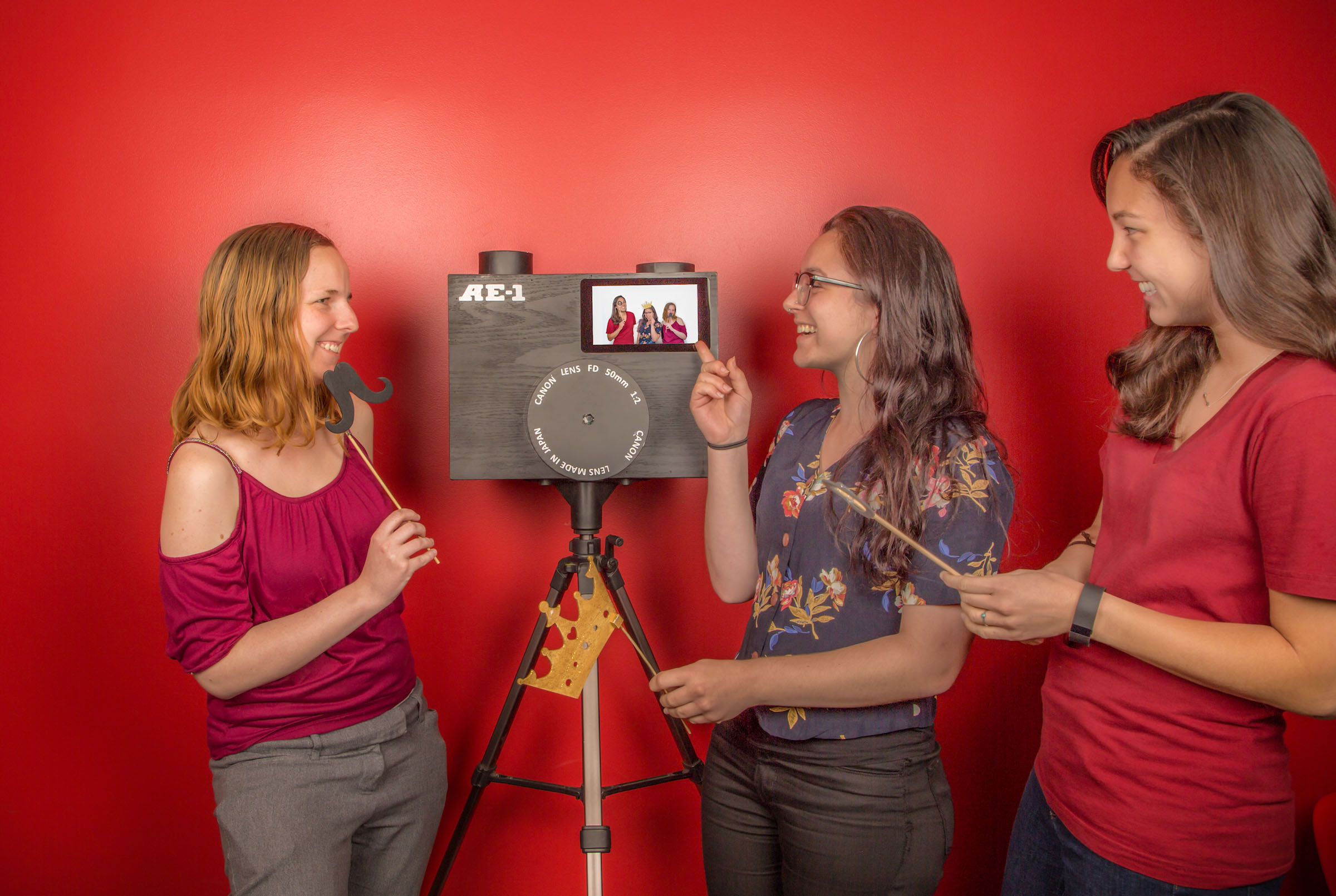
Everybody loves clowning in a digital photo booth at parties and weddings, then sharing the photos online. But who wants to risk a laptop getting doused with margaritas or champagne?

These days, cheap single-board computers make it easy to roll your own standalone photo booth that can connect to the internet with no help from your precious PC. Here’s a simple build that’s based on the Raspberry Pi mini computer and Pi Camera Module. It’s touchscreen-controlled by partygoers, and it automatically emails your photos (if you wish) and uploads them to Google Photos where anyone with the password can see and share. All the software is open source.
Our gang at WyoLum originally made a Raspberry Pi photo booth to write custom images for E Ink badges at the Open Hardware Summit in 2013, pairing the Pi with our popular AlaMode Arduino-compatible development board. The touchscreen display we used (also used in the “PiPad” tablet in Make: Volume 38) was nice, but expensive. Since then, the official Raspberry Pi Touchscreen has been released, and the new Raspberry Pi Model 3 has integrated Wi-Fi. Perfect for this project!
So we redesigned our OpenSelfie photo booth as the TouchSelfie, and tied it all together with a minimal set of mounting brackets you can 3D print (or laser-cut) to mount the whole thing on a tripod. You can also design and build your own amusing enclosure if you prefer.
Build Your Touchscreen Wi-Fi Photo Booth
First you’ll set up the Pi with the right software, then connect all the hardware. I like to use a wireless keyboard for setup, but you can use a wired keyboard, or after initial configuration, you can use SSH.



